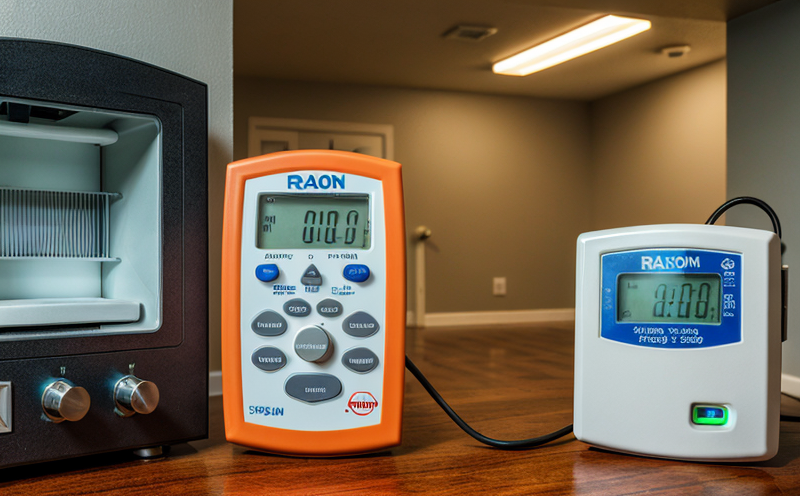ISO 18589-1 Soil Sampling for Radon and Radiation Analysis
The ISO 18589 standard is a set of guidelines designed to ensure accurate and reliable measurements of radon in the soil. This service focuses on ISO 18589-1:2017, which specifies procedures for sampling soil in order to determine the radon potential. Radon, a colorless, odorless, and tasteless gas, can be hazardous when present at high levels indoors.
The importance of this service lies in its ability to provide accurate data that can inform decisions on building site selection, construction practices, and indoor air quality management. Quality managers, compliance officers, R&D engineers, and procurement professionals must ensure they adhere to the latest standards for radon measurement. This service helps them achieve these goals by providing precise soil sampling methods that are internationally recognized.
The ISO 18589-1 standard is applicable in various sectors including construction, environmental science, real estate development, and health and safety. It provides a robust framework to ensure that the sampling process adheres to best practices, thereby ensuring accurate radon concentration data. This service ensures compliance with international standards, which can significantly reduce the risk of non-compliance issues down the line.
Soil sampling for radon is critical in regions where high levels of uranium or thorium are present, as these elements decay and release radon gas into the air. The process involves collecting soil samples from various depths and locations to determine the radon potential accurately. This data can then be used to inform decisions on building design, ventilation systems, and other measures that may reduce indoor radon levels.
The sampling procedure outlined in ISO 18589-1 is designed to minimize bias and ensure that the results are representative of the actual radon levels present in the soil. This involves carefully selecting sample locations and depths, using appropriate tools for excavation, and ensuring proper handling and storage of the samples. The process also includes guidelines for preparing the samples for analysis, which typically involves drying and grinding them before sending to a laboratory for testing.
By adhering to the ISO 18589-1 standard, laboratories ensure that their results are consistent with international best practices. This is particularly important given the global nature of construction projects and real estate transactions. The service provided by this facility ensures that all stakeholders involved in a project can have confidence in the accuracy of the radon data.
The ISO 18589-1 standard covers various aspects of soil sampling, including:
- Sampling location selection
- Sample depth determination
- Excavation techniques
- Sample preparation and handling
- Transportation and storage conditions
The service provided by this facility ensures that all these aspects are addressed in a manner that is consistent with the standard. This helps to ensure that the results obtained from soil sampling are reliable and can be used to make informed decisions about radon mitigation strategies.
Scope and Methodology
| Aspect of Sampling | Description |
|---|---|
| Sampling Location | The location must be representative of the site's soil composition and radon potential. It is recommended to sample at multiple points across the area. |
| Sample Depth | The standard recommends sampling from a depth of 0.3 meters, which corresponds to the topsoil layer where most radon emanates. |
| Excavation Technique | The use of a coring tool is recommended to minimize disturbance and ensure that the sample remains undisturbed. |
| Sample Preparation | The samples must be dried thoroughly before grinding. Grinding ensures that all particles are fine enough for accurate measurement. |
| Transportation and Storage | Samples should be stored in airtight containers to prevent contamination or loss of radon gas. |
The methodology described above is consistent with the ISO 18589-1 standard. By following these guidelines, we ensure that our results are accurate and reliable. This helps to reduce the risk of non-compliance issues and ensures that stakeholders can have confidence in the data obtained.
Benefits
- Accurate Data: The ISO 18589-1 standard ensures that soil samples are collected and analyzed accurately, providing reliable radon concentration data.
- International Consistency: Adhering to this standard ensures consistency with international best practices, making the results more credible for global projects.
- Compliance Assurance: This service helps ensure compliance with local and international regulations related to radon measurement.
- Risk Reduction: Accurate data can inform decisions that reduce the risk of high indoor radon levels, which is a health hazard.
- Informed Decision-Making: The service provides stakeholders with the information they need to make informed decisions about building design and construction practices.
- Client Confidence: By adhering to international standards, we ensure that our clients can have confidence in the results obtained.
The benefits of this service extend beyond just providing accurate data. It also helps to reduce risks associated with high radon levels and ensures compliance with regulations. This is particularly important for construction projects where soil conditions are critical to the overall design and safety of the building.
International Acceptance and Recognition
The ISO 18589-1 standard has gained widespread acceptance in many countries around the world. Its use ensures that radon measurement results are consistent and reliable, which is crucial for international projects. Many countries have adopted this standard as a requirement for soil sampling in construction projects.
Some of the countries where ISO 18589-1 has gained recognition include:
- Australia
- New Zealand
- Canada
- United States
- European Union member states
The standard is also recognized by various international organizations such as the World Health Organization (WHO) and the International Atomic Energy Agency (IAEA). This recognition ensures that the results obtained from this service are widely accepted and can be used in global projects.





